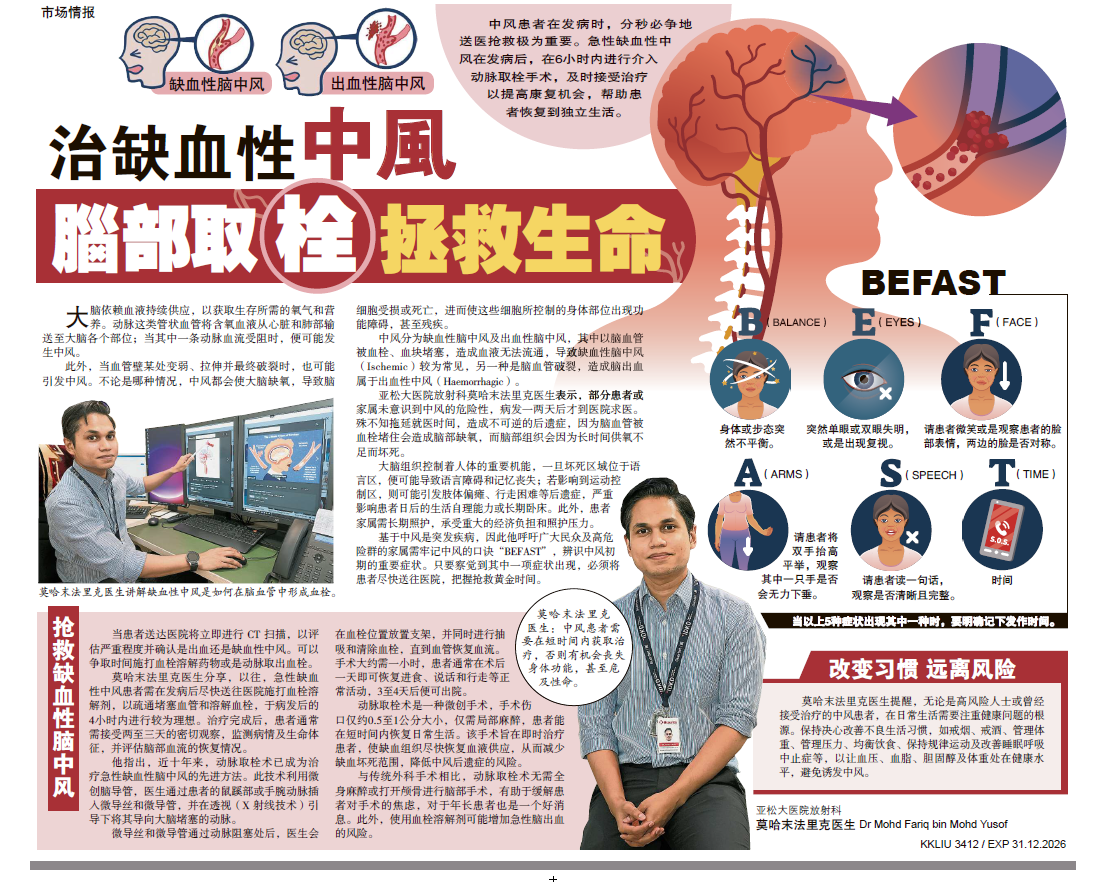Discover how you can kick back after taking the fall on this page as Assunta Hospital’s Consultant Orthopaedic Surgeon, Dr Vivekananda tackles the curveballs faced by professional, amateur athletes and even by you in this first installation of our exclusive two-part series on sports injuries.
Your knee is not only the biggest joint in your body; it is also the most commonly injured joint in a sports accident or even during strenuous physical activity. The embattled former world no.1 golfer, Tiger Woods, and internationally celebrated Brazilian football striker Ronaldo Luis Nazario De Lima or simply Ronaldo, are some noteworthy athletes who are no strangers to knee ligament injuries. Although you may not be as popular or share the same world rankings in sports, you just may be able to relate to the similar agonizing pain and discomfort they have undergone when faced with a knee ligament injury.
So how do these injuries occur and what causes them? First, it is important to understand that your ligaments are tissues (much like rubber bands) that connect the bones in your body. When you stretch a rubber band beyond its capacity, it will either snap or lose its elasticity. This is exactly what happens to your ligaments when there is excessive strain or if you stretch them too far in a sports accident.
Twisting your knee as you land on your foot, getting hit on the knee, stopping mid-stride while running and extending your knee too far are the usual problems causing these ligament injuries commonly faced by footballers, skiers, rugby players, ballerinas and yes even housewives.
For sports enthusiasts and athletes (professionals and amateurs alike), knee ligament injuries especially the anterior cruciate ligament (ACL) tear, have become familiar medical terms that would usually signal a painful, debilitating and possibly traumatic experience.
In the past, taking a fall and injuring the knee would have marked the end of a professional athletic career and also put a stop to most physical activities that require strain to the knee. Even the usual morning jog and the quiet strolls would become an uncomfortable chore for those suffering from a knee injury.
But now, thanks to the advancement in the medical field, treatment for these injuries has successfully managed to restore normal (or almost normal) stability in the knee. The current medical technology also helps to limit loss of function in the knee and prevents further injury or degeneration to your knee in the long run.
Apart from the ACL, there are three other ligaments in the knee that are most prone to sports injuries and these include the posterior cruciate ligament (PCL), the lateral collateral ligament (LCL) and the medial collateral ligament (MCL).
Injuries to these ligaments during sports are also usually accompanied by another notorious injury known as a meniscal tear. The meniscus is a cartilage that acts as a shock absorber for the knee and it also allows flexibility and stabilizes the knee. In the event of a sports injury, the meniscus is highly likely to be torn simultaneously as the ACL.
Whether or not you sustained an injury to your ligament at a football tournament or while performing household chores here’s what you should look out for:
- A sudden sharp pain that is often severe in your knee
- A popping sound or if you feel a snap in your knee
- Swelling can sometimes be instantaneous
- A loose feeling in the affected joint
- Shooting pains upon exertion and stress on the affected leg
It is best to immediately check with your doctor the second you experience the symptoms above. To thoroughly examine your knee, he or she may first drain the liquid accumulated in the joint that caused the swelling by using a needle. Upon confirming there is a ligament injury the doctor will then send you for a series of tests including X-rays, MRI (Magnetic Resonance Imaging) scans, and or other tests to evaluate the extent of your injury.
Usually patients suffering from mild to moderate ligament injuries will not actually require surgery. To speed up the healing process, you can try the following tips:
- Rest. Do not strain your knee and avoid putting weight on the affected leg. Crutches are recommended.
- Ice the affected knee to minimize pain and the swelling.
- You could use an elastic bandage, straps or sleeves to compress the swelling on your knee.
- Keep your knee elevated while stiing or lying down.
- Wearing a knee brace can help stabilize the knee.
- Your doctor may also prescribe anti-inflammatory drugs and pain killers to ebb the pain.
Surgery may be required to re-attach or reconstruct the ligament depending on the extent of the injury. That said, cruciate ligaments such as the ACL and PCL cannot be repaired or re-attached. Reconstruction is recommended for those who have constant pain and severe instability in their knees. Professional and amateur athletes and even those who feel this injury interferes with their quality of life and opt for reconstruction surgery will be able to regain almost complete mobility and agility as before the injury through constructive surgery.
It would usually take up to 6 weeks or more for most patients to heal and start walking normally again but with the rehabilitative aid of physiotherapy and even hydrotherapy, the recovery rate can markedly be increased for some. But remember not to rush this process as it could permanently affect your knee for the rest of your life.
Only opt to attempt returning to your former level of physical activity when there is no pain while stretching, bending and straightening your knee. Walking, jogging, sprinting and even jumping should not cause discomfort and pain.
Keep your eyes peeled for the final installation of this two-part series on sports injuries in the upcoming Assunta X-Change Jan 2012 Edition.











